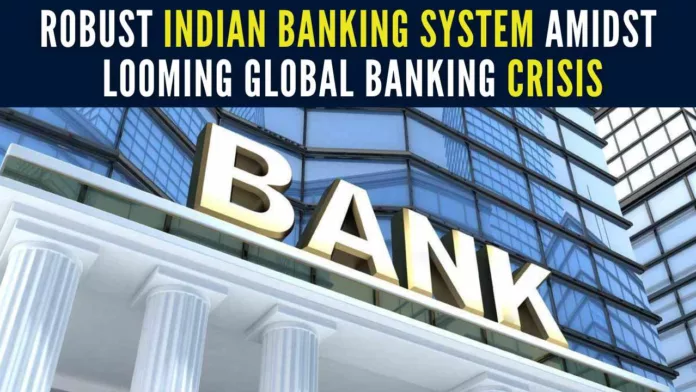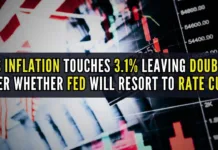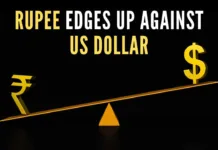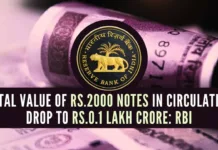
India is well-positioned to tackle the impact of the current US banking crisis and interest rate hikes: CRISIL report
Amid the collapse of US-based tech industry-oriented Silicon Valley Bank (SVB), and Signature Bank, the banking system in India has shown impressive resilience even in difficult times.
Given the looming crisis in the West over the last few days, global media has been conducting a comparative analysis of the situation in India vis-a-vis the US. As per a report by CRISIL — the ratings, risk and advisory services provider for companies and financial institutions — India is well-positioned to tackle the impact of the current US banking crisis and interest rate hikes.
This is attributed to the factors like India’s reduced dependence on external funds, reduced current account deficit, and availability of sufficient forex reserves with the central bank in the positive growth environment.
Robust banking and financial institutions built on the sound policies of the RBI and adherence to international regulatory norms provide the Indian banking system the resilience to face the bolt of the turbulent Western winds.
The exceptional performance of Indian banks, even in tumultuous times, is well applauded by the Fitch Ratings. Their assessment notes a sustained improvement in the financial performance of Indian banks, so much so that the speed of asset quality and profitability expansion exceeds Fitch’s projections. They also note Indian banks’ tolerance to face risks, drop in credit costs leading to an improvement in return on asset, higher than expected loan growth, and improvement in net interest margins.
On the contrary, confidence in the banking system is evident from the fact that after the SVB collapse, Indian startups withdrew around $70 million from the US and invested in the GIFT city in India.
The resilience of Indian banks stems from the frequent exposure to regular interest rate cycles, unlike the advanced economies where long-term interest rates remain close to zero for long periods. Contrarily, market fault lines become visible whenever interest rates in the West shoot up. Moreover, the Indian banking system is marked by the central bank’s careful scrutiny of commercial banks and financial institutions.
The central bank regulates commercial banks so that they are not allowed to place more than 23% of deposit liabilities in their Held-to-Maturity (HTM) portfolios, thus reducing the impact of loss in HTM portfolios on deposits. Through its frequent assessments of banking institutions, the Reserve Bank of India (RBI), the central bank, ensures that vulnerabilities are identified even in smaller institutions.
Moreover, banking indicators like net interest margin, the ratio of net bad loans to net advances, and the capital adequacy ratio remain well above Basel III norms for most top Indian banks now.
Cut to May 2023, another US bank catering to clients in the coastal regions, the First Republic Bank is facing deteriorating financial health in the aftermath of the collapse of two US banks earlier. First Republic Bank had been teetering for weeks. Despite another blow to the financial system, Biden returned, assuring citizens that the banking system is “safe and sound”.
However, the Federal Reserve has lost the leftover credibility that remained amongst the field experts. The fear exists that the avalanche of SVB collapsed will deteriorate the stability in the near future, leading to a recessionary situation with a cut down in social security, a rise in unemployment in the US, and a loss in the value of the dollar.
Over the last week, the Federal Reserve warned against the possibility of a credit crunch in the aftermath of the consecutive bank failures. As a result, concerns related to liquidity and economic outlook have led to contractionary monetary policy measures through reduced lending via banks. If restricted credit supply continues, it will discourage borrowings leading to a fall in business operations and consumption demand, thus slowing down the US economy.
[With Inputs from IANS]
PGurus is now on Telegram. Click here to join our channel and stay updated with all the latest news and views
For all the latest updates, download PGurus App.
- PM Modi calls on countries to invest in resilient infrastructure at 39-nation meet on natural disasters - April 24, 2024
- Elon Musk’s X to launch dedicated TV app for videos soon - April 24, 2024
- ‘Made in India’: DRDO develops lightest bulletproof jacket for protection against highest threat level - April 24, 2024











Thanks to great corruption in political & banking system.